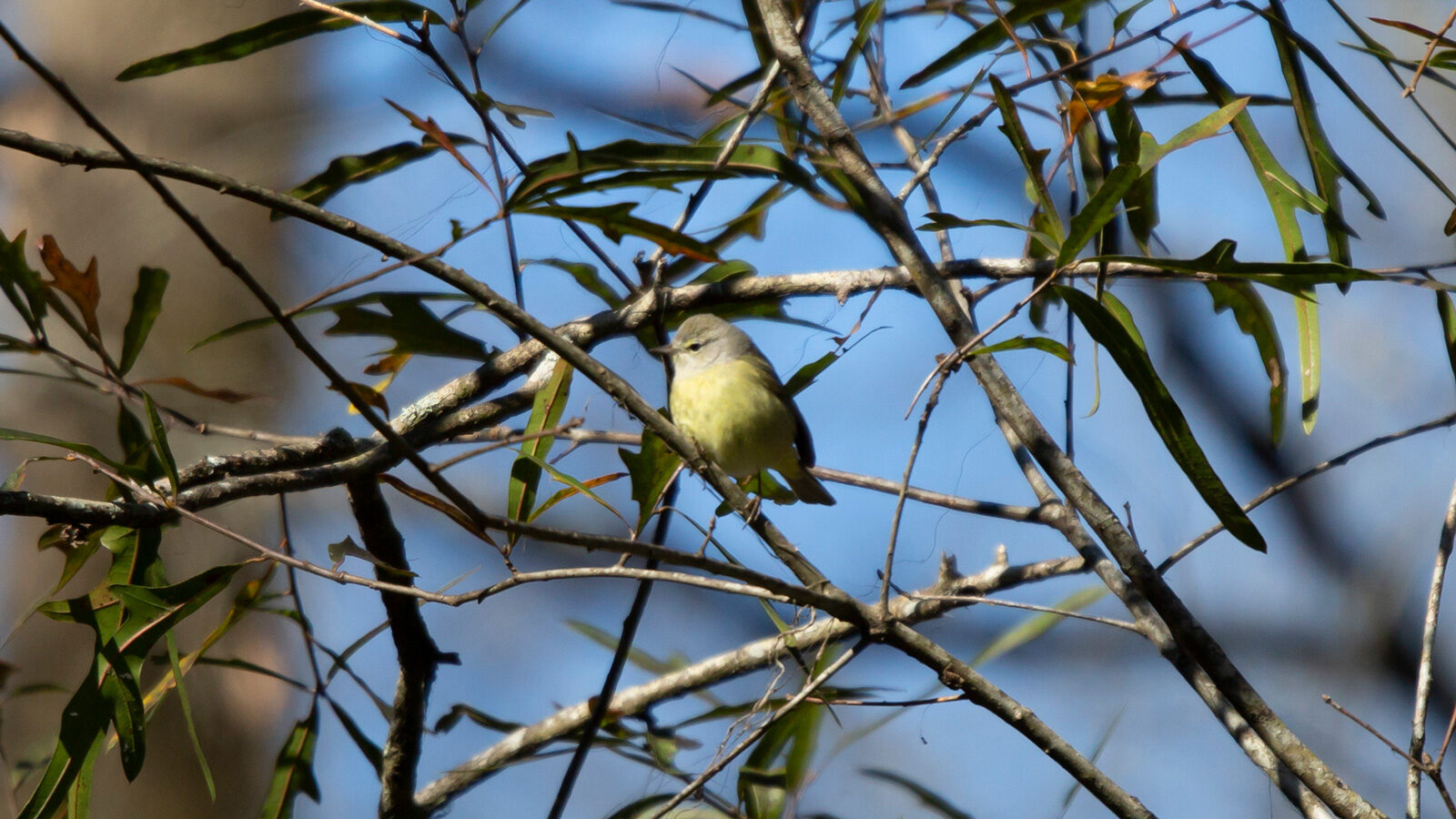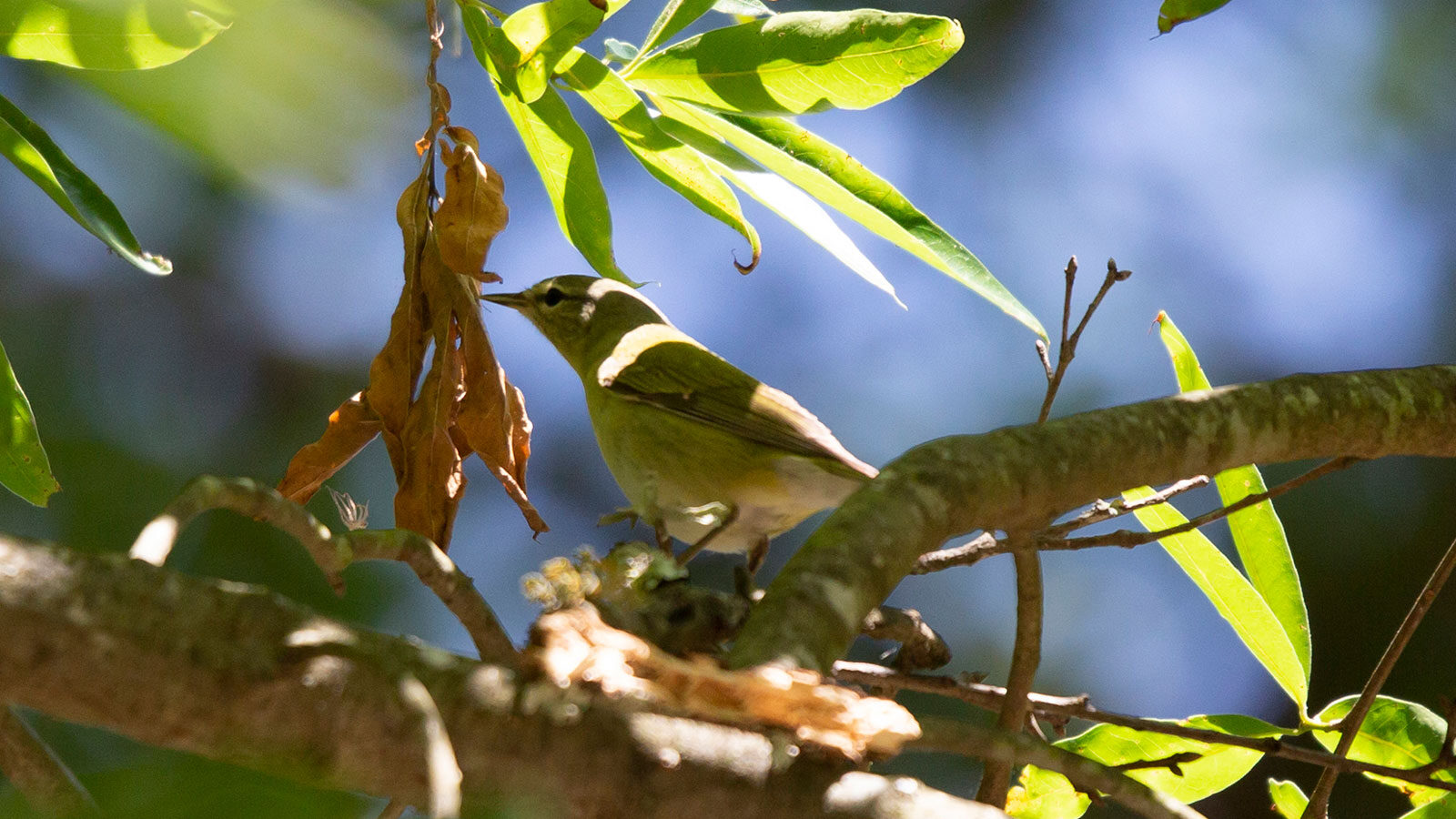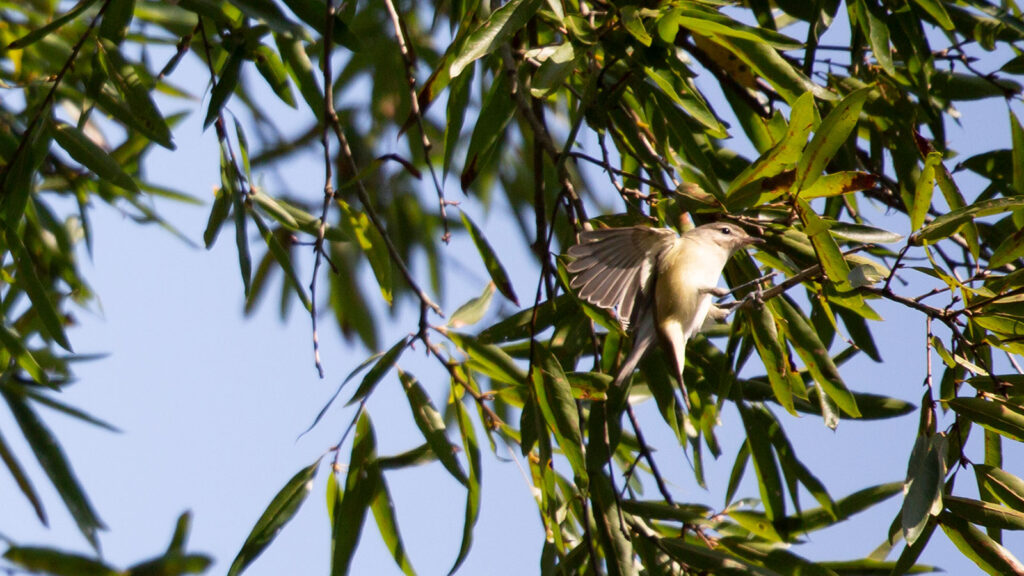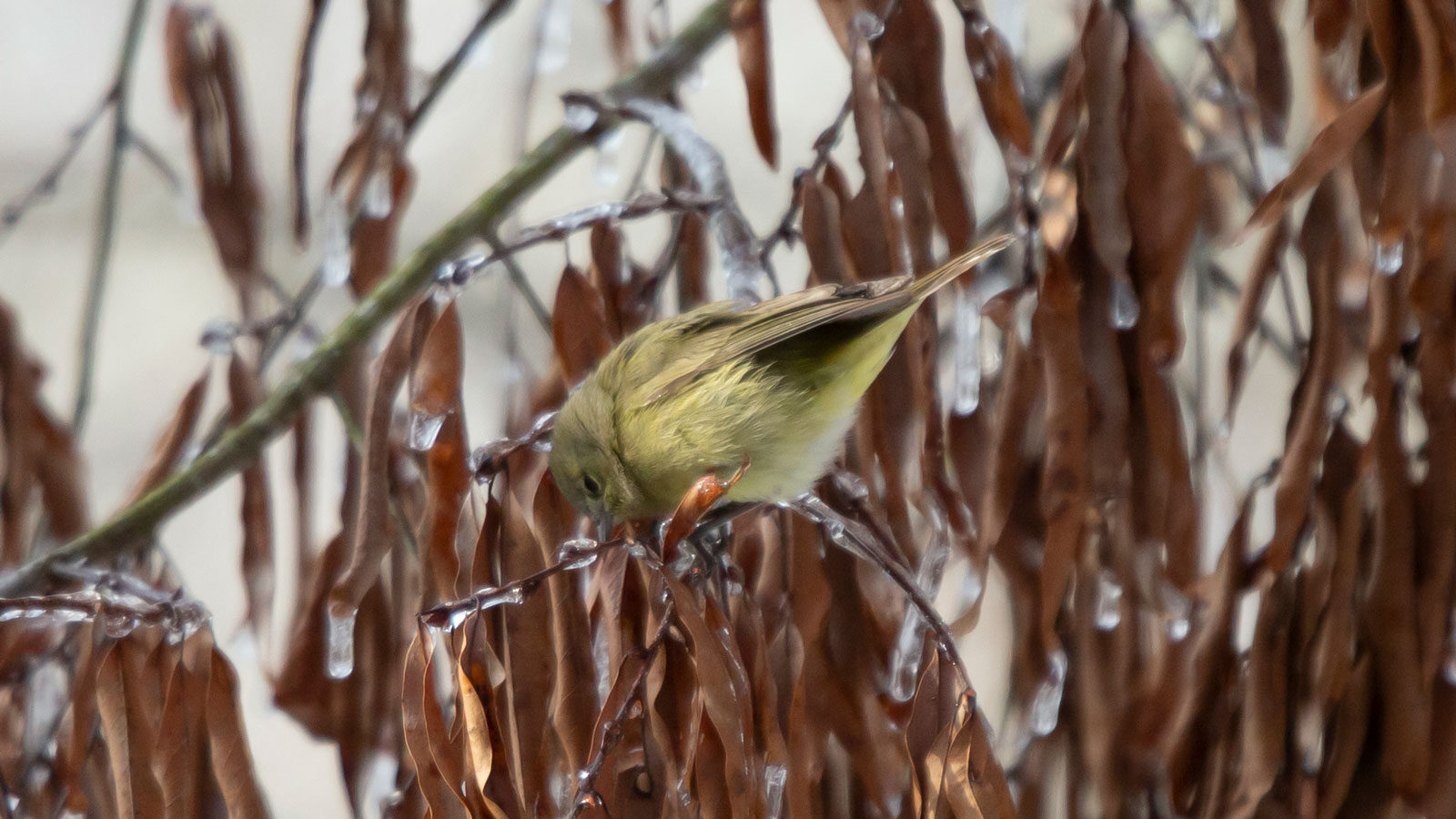Orange-Crowned Warblers
at
a Glance

Key Features:
Orange-crowned warblers are small, olive yellow birds.
Least Concern - Population Increasing
Habitat:
Forests
nesting habits:
Orange-crowned warblers build nests on or near the ground out of bark, grass, hair, leaves, moss, stems, twigs, and wool.
seasons orange-crowned warblers are active in our area:
Spring, fall
Diet:
Insects, spiders, fruit, plant galls, and seeds
hunting Behavior:
Orange-crowned warblers forage in shrubbery and trees.
Commonly Confused With:
Mourning Warblers, Philadelphia Vireos, and Tennessee Warblers

Orange-crowned warblers are often confused with Tennessee warblers because both have gray heads. Orange-crowned warblers have yellow feathers under their tails. Tennessee warblers have white feathers under their tails.

Orange-crowned warblers are often confused with Philadelphia vireos because both are small olive birds. Orange-crowned warblers are smaller and have thinner beaks.
